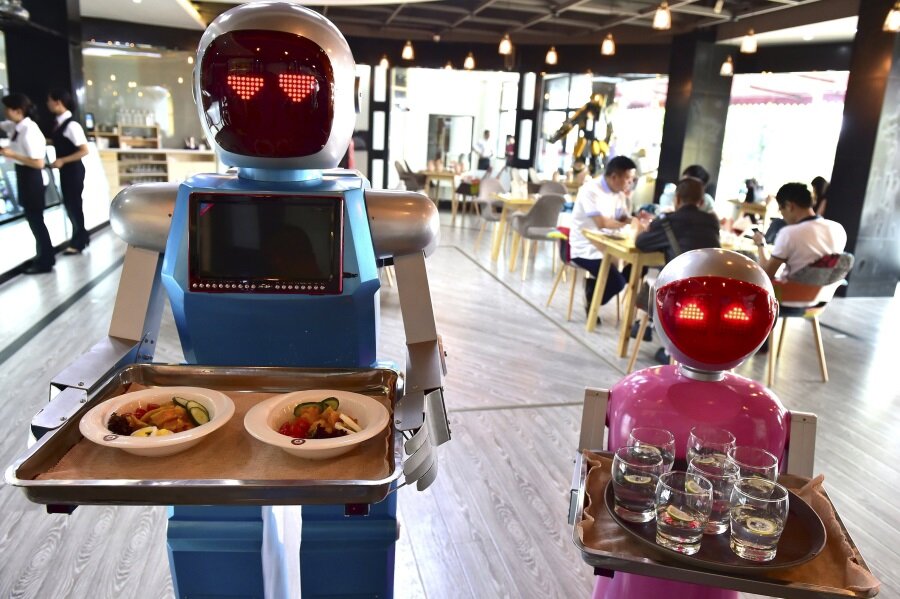If robots replace half of US workers, what role will humans play?
Loading...
Could a computer or a robot do your job? If you work in a field such as telemarketing, office work, or insurance underwriting, chances are good that it could, say researchers at the University of Oxford.
Their report, titled “The Future of Employment,” estimates that 47 percent of jobs in the United States are susceptible to automation within the next 20 years as computers and robots become more sophisticated.
That’s the bad news. The good news is that computerization doesn’t necessarily spell disaster for the US economy, since new jobs will arise as others are ceded to machines. In the early 1900s, about 40 percent of the American workforce worked in agriculture; today only about 2 percent does, yet the unemployment rate has been steady over the long term.
Michael Osborne, a professor of machine learning and one of the report’s authors, says technological developments over the past few years have lent weight to the report’s conclusions. As computers become more adept at performing jobs in certain industries, other new industries – such as software development, big data analysis, and renewable energy – are creating jobs for people, he told the Brisbane Times. Professor Osborne is visiting Brisbane, Australia, this week to discuss his findings on what the future of work might look like.
His 2013 report included several surprising conclusions, such as the prediction that restaurant servers are particularly susceptible to having their jobs replaced by computers and robots. The authors said they found that scenario implausible at first, since making pleasant small talk with customers is at the heart of a restaurant service job, and that’s not something robots are particularly good at. But a number of restaurant chains, including Chili’s and Applebee’s, have begun adding small tablets to their tables that allow customers to place food orders and pay for their meals. Servers still bring food to tables and interact with customers, but some aspects of the job are now automated.
To produce the report, the authors took data on more than 700 occupations from the US Department of Labor and used an algorithm to estimate how susceptible each occupation is to computerization based on variables such as the amount of social intelligence, creativity, and visual perception needed to be successful at that occupation. In addition to restaurant servers, they found that telemarketers, legal secretaries, watch repairers, and – surprisingly – models were at an especially high risk of being replaced by machines. (Presumably this means we’ll see more computer-drawn fashion models in print and video advertising, as opposed to cyborgs strutting the catwalk.)
It’s tough to predict what the labor market will look like in 20 years. Certainly some of the jobs we take for granted today will be automated as robots and computers become more sophisticated, but it’s just as certain that people will be working in new industries that haven’t even been dreamed up yet.








